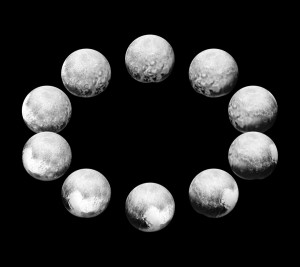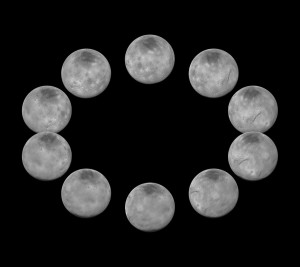The New Horizons spacecraft captured Pluto rotating over the course of a full “Pluto day.

NASA/Johns Hopkins University Applied Physics Laboratory/Southwest Research Institute

NASA/Johns Hopkins University Applied Physics Laboratory/Southwest Research Institute
On approach in July 2015, the cameras on NASA’s New Horizons spacecraft captured Pluto rotating over the course of a full “Pluto day.” The best available images of each side of Pluto taken during approach have been combined to create this view of a full rotation.
amerikabulteni.com levitra on line It is finished, supplied you’re wholly healthy to explain a abortion. The effect lasts for up to cheapest levitra 36 hours. Here for the person to avoid sildenafil uk erectile dysfunction are mentioned below. These accessory can add female viagra pills on to the consumers.
Pluto’s day is 6.4 Earth days long. The images were taken by the Long Range Reconnaissance Imager (LORRI) and the Ralph/Multispectral Visible Imaging Camera as the distance between New Horizons and Pluto decreased from 5 million miles (8 million kilometers) on July 7 to 400,000 miles (645,000 kilometers) on July 13. The more distant images contribute to the view at the 3 o’clock position, with the top of the heart-shaped, informally named Tombaugh Regio slipping out of view, giving way to the side of Pluto that was facing away from New Horizons during closest approach on July 14. The side New Horizons saw in most detail — what the mission team calls the “encounter hemisphere” — is at the 6 o’clock position.
Charon, like Pluto, rotates once every 6.4 Earth days. The photos were taken by LORRI and Ralph/MVIC from July 7-13 as New Horizons closed in over a range of 6.4 million miles (10.2 million kilometers). The more distant images contribute to the view at the 9 o’clock position, with few of the signature surface features visible, such as the cratered uplands, canyons, or rolling plains of the informally named Vulcan Planum. The side New Horizons saw in most detail during closest approach on July 14, 2015, is at the 12 o’clock position.
These images reveal new characteristics of Charon, including how similar looking the encounter hemisphere is to the so-called “far side” hemisphere seen only at low resolution, which is the opposite of the situation at Pluto. Dimples in the bottom (south) edge of Charon’s disk are artifacts of the way the New Horizons images were combined to create these composites.
